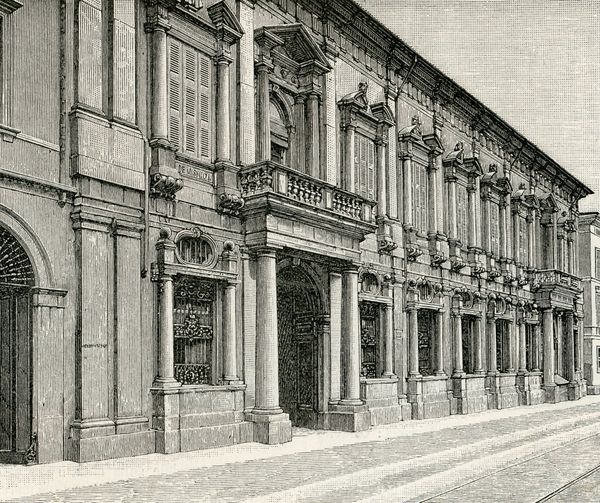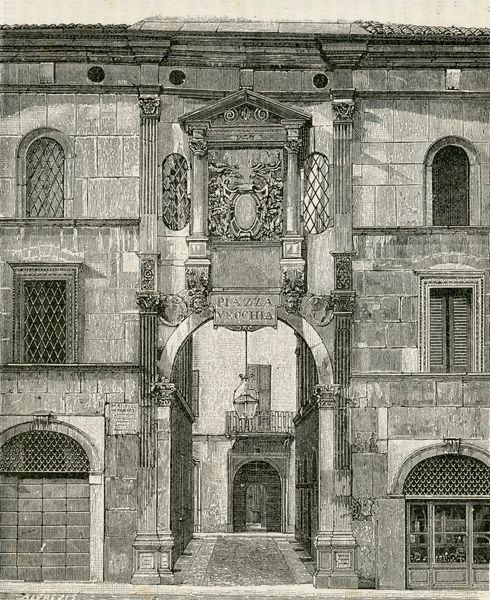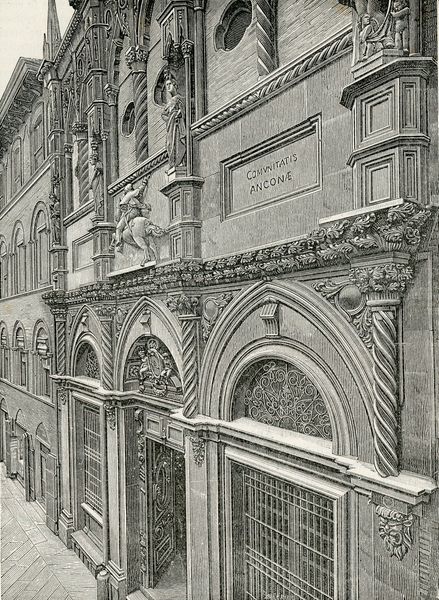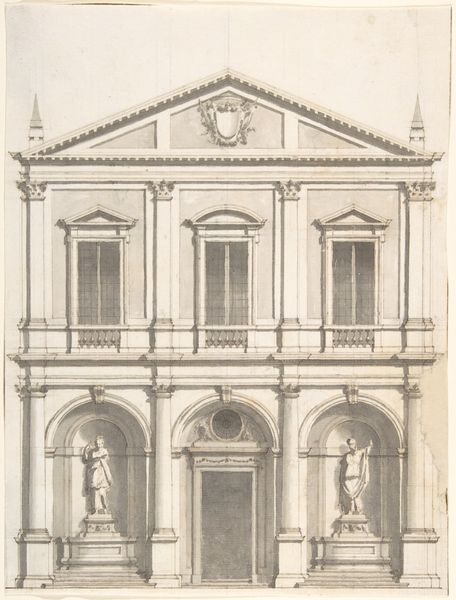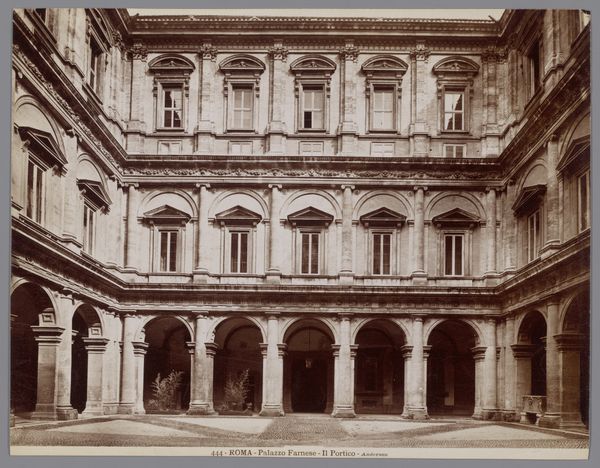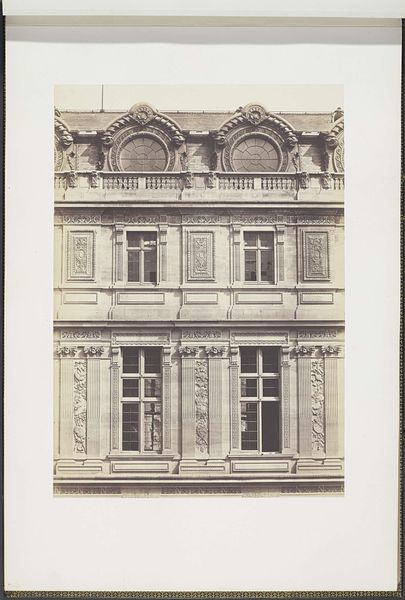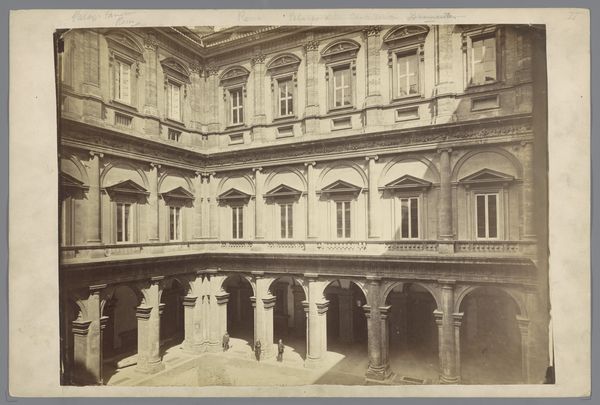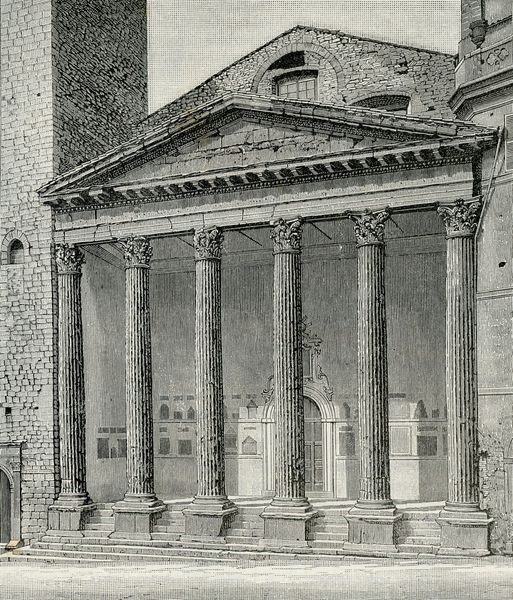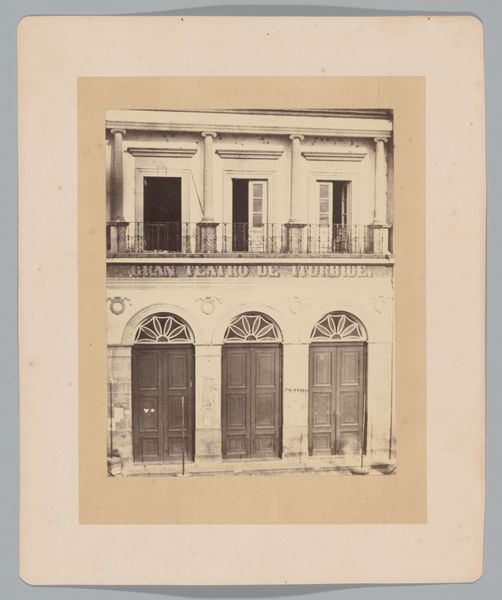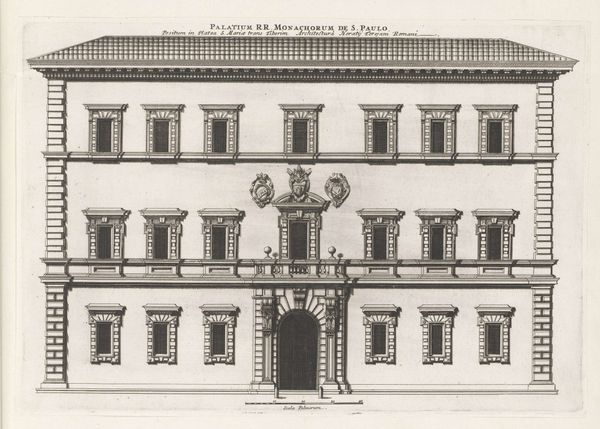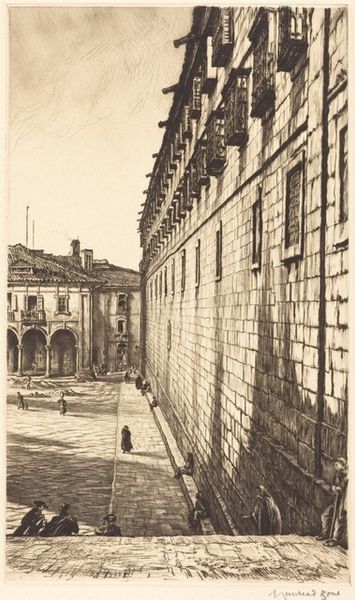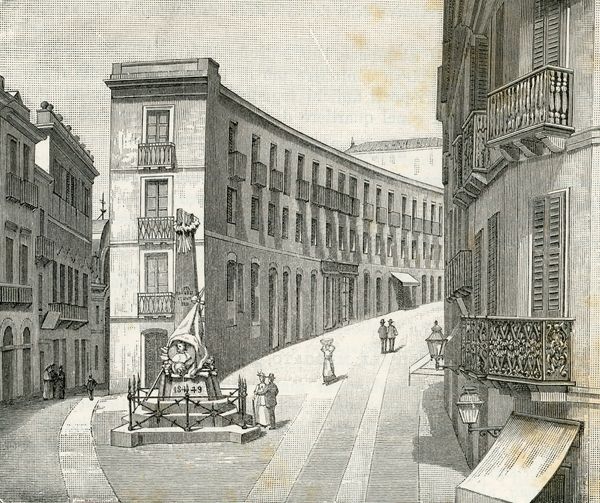
drawing, print, architecture
#
architectural sketch
#
drawing
#
building study
#
architectural landscape
#
architectural modelling rendering
# print
#
architecture mock-up
#
historic architecture
#
geometric
#
architectural section drawing
#
architectural drawing
#
line
#
architecture drawing
#
architectural proposal
#
cityscape
#
architecture
Copyright: Public domain
Curator: This intricate print by Giuseppe Barberis is titled "Casino Fortunato," created around 1897. Editor: My first thought is about texture and the linear detail. I see a clear sense of age and history rendered in these tight cross-hatchings, giving the architecture a rather formal and perhaps austere quality. Curator: Right, and it's crucial to consider the cultural context of architecture, particularly structures built for leisure. A casino at the turn of the century speaks volumes about class, social mobility and, perhaps, the illusion of control within a rapidly changing society. Editor: Absolutely, and focusing on its materiality, we see here a carefully constructed image. What were the typical printing methods during this period, and how might Barberis have used them to convey ideas of permanence and status? Curator: Well, the late 19th century saw significant advances in printing technology, which enabled wider distribution of architectural designs and, significantly, propaganda material. "Casino Fortunato" embodies ideals linked with societal "progress" and even aspirations of bourgeois culture during a tumultuous time. The building could easily become a symbol. Editor: Interesting. I'm intrigued by the facade. It has this imposing presence, constructed layer upon layer, material upon material, labor upon labor. Who built this casino, and what were their lives like? Curator: Precisely, whose labor was behind it and whose fortunes were gambled away within. The casino symbolizes the exploitation of workers in many societies. The whole idea becomes suspect with further study. Editor: Examining the actual methods—the artistic process— allows for deeper social commentary. The way buildings are produced reveals truths about social structures, doesn't it? This drawing certainly prompts broader thinking. Curator: Exactly, and I appreciate how focusing on labor and materiality can bring marginalized voices and perspectives to the forefront of art discourse, making the viewing process more meaningful. Editor: For me, looking at its physicality leads to all sorts of discussions about class and even value. These lines and details speak volumes when considered from a production perspective. Curator: Understanding both the history and social contexts in pieces like "Casino Fortunato" creates crucial dialog about wealth and power, while prompting social changes. Editor: Analyzing production unveils broader understandings regarding class struggle during different historical events, allowing a viewer an enriched perspective regarding the meaning of particular items like Giuseppe Barberis’s art print.
Comments
No comments
Be the first to comment and join the conversation on the ultimate creative platform.
